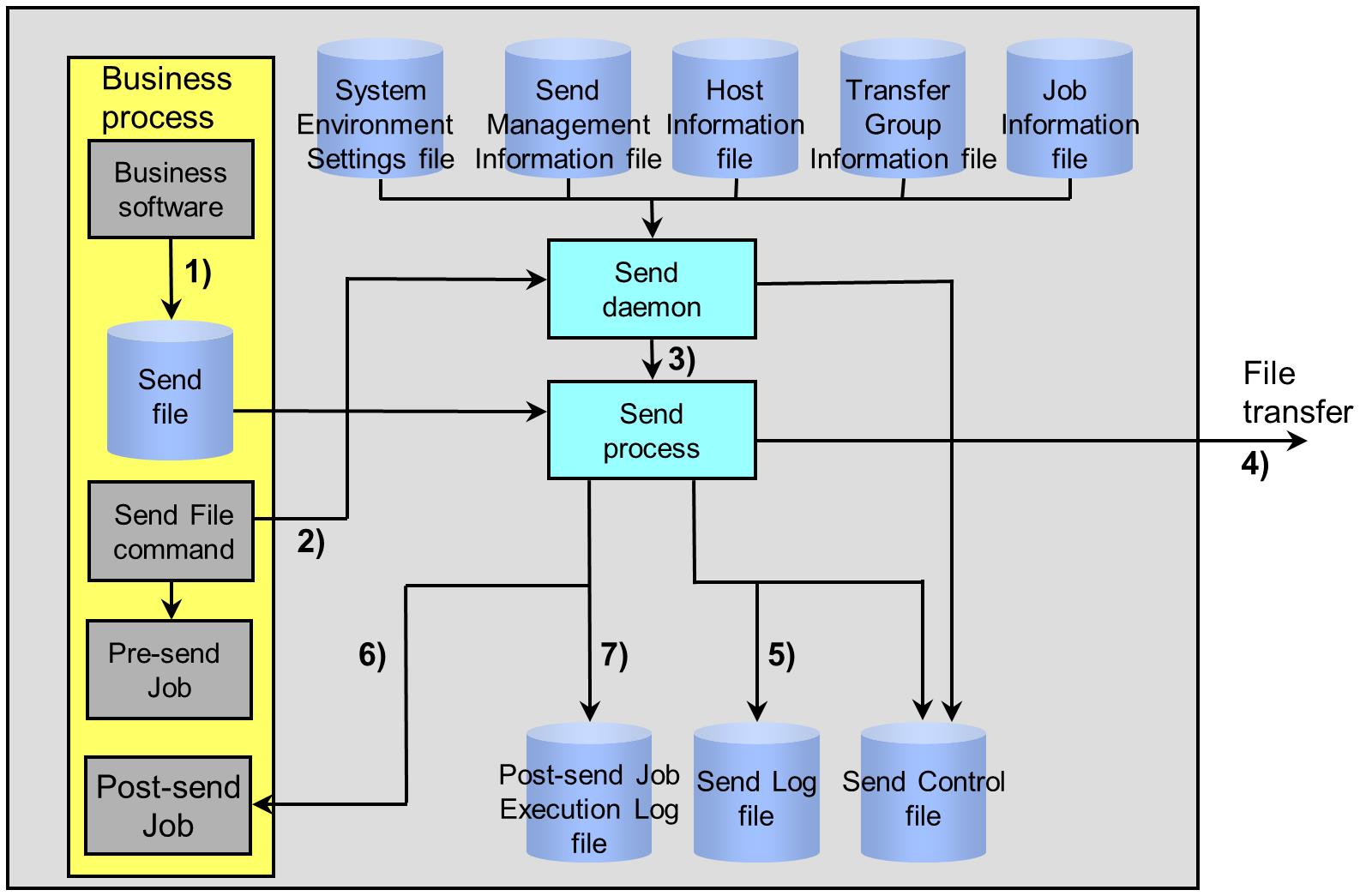Flow of sending
The processing entity that runs on the sending-side host for transferring files from there to a specified host is called 'sending.'
The processing for the sending is started by issuing a command to request a transfer of the sender's target file ('Send file'). This request command is called 'Send File' in HULFT.
This processing is based on the assumption that both the Send daemon on the sending side and the Receive daemon on the receiving side have already been started.
The flow of the sending that is started on the sending side is illustrated in Figure 2.1 .
The target file (Send file) can be any file that you create in the course of your daily office operations.
2) Issuing the Send File command
Issuing the Send File command (utlsend) to the Send daemon starts the sending-side processing for data transfer on the sending-side host. The processing can be carried out automatically by incorporating the Send File command into office operations such as mentioned in step 1) . In addition, the processing can also be manually started on the HULFT Management Console.
In the Send Management Information, you can define a 'Pre-send Job', which HULFT executes before the Send File command issues the subsequent request to the Send daemon.
3) Starting up the Send process
The Send daemon receives the Send File command and starts the Send process according to the conditions in each management information file. This operation is carried out at the time of each transfer.
4) Carrying out Send processing
The Send process carries out Code Conversion and file compression based on the settings in the Send Management Information and transfers the data of the Send file to the remote host.
5) Writing the result to the Send Log file
The Send process writes the result of the Send processing in the Send Log file (hulsndlog.db) after the processing is complete. In addition, if the Send processing ends unsuccessfully, the Send process writes the information about the failed transfer into the Send Control file (Resend Queue file) (sddsendlist.dat).
6) Starting up the Post-send Job
The Send process activates a 'Post-send Job' that is registered in the Job Information according to the condition that is registered in the Send Management Information. HULFT activates either the job that is specified for the successful end of the sending or the one for the unsuccessful end of the sending, depending on the transfer result.
7) Writing the result to the Post-send Job Execution Log file
The Send process writes the job execution results to the Post-send Job Execution Log file (hulsndlog.db).
-
The term 'job' represents an operation unit. A job specifies the execution of shell scripts, the execution of a command, and so on.
-
HULFT does not write the execution result of the Pre-send Job to the log file.
-
HULFT does not execute the Pre-send Job for the Resend File.
